I know an elder who entered the cryptocurrency market with 100,000 yuan and now has a market value of 42 million. He once told me a statement that enlightened me: 'In this market, everyone is a mob; all you need to do is control your own emotions, and this market is a money machine!'
Having been through the ups and downs in the cryptocurrency circle, your trading strategy is your 'secret weapon.' The following rules are the crystallization of practical experience; hurry up and collect them!
Entry chapter: In the cryptocurrency circle, try the waters and prepare to proceed; enter steadily, refuse to rush in.
Sideways chapter: When low prices are sideways and making new lows, it’s the right time to heavily bottom fish; when high prices are sideways and spiking, decisively sell without hesitation.
Volatility chapter: Sell on spikes, buy on drops; watch the market, reduce trading; sideways means trading instead of falling, hold tight; the surge might just be a second away; during rapid surges, beware of sharp drops and be ready to secure profits; a gradual decline is the perfect time to gradually add positions.
Buying and selling timing: Don't sell on spikes; don't buy on drops; don't trade during sideways movements. Buy on bearish candles and sell on bullish candles; only through contrarian operations can you stand out. Buy on significant morning drops, and sell on significant morning gains; don't chase highs in the afternoon if there’s a big rise, and buy on the next day after a big drop; don’t cut losses on significant morning drops; if there's no rise or fall, take a break; adding positions while trapped in losses seeks to break even; excessive greed is to be avoided.
Risk awareness chapter: A calm lake can lead to high waves; there may be big tides ahead; after a big rise, a correction is inevitable; candlesticks may show a triangle over several days. In an uptrend, look for support; in a downtrend, look for resistance. Full positions are a major taboo; stubbornness is unwise; in the face of unpredictability, know when to stop and seize the opportunity to enter and exit.
Trading cryptocurrency is essentially trading mindset; greed and fear are major foes; be cautious when chasing highs and lows, and maintain a calm mind for peace.
In addition to the rules, I have also organized several super practical trading methods that can benefit both novice beginners and experienced players.
Oscillation trading method: Most market conditions are in oscillation patterns; utilizing high sell and low buy within the range is the foundation of stable profits. Using BOLL indicators and box theory, and combining technical indicators with charts to accurately identify resistance and support, follow short-term trading principles, and avoid greed.
Breakout trading method: After prolonged consolidation, the market will choose a direction; entering after a breakout can yield quick profits but requires precise breakout identification.
Single-sided trend trading method: After the market breaks through the consolidation, it will form a single-sided trend. Trading in the direction of the trend is key to profit; enter the market during pullbacks or rebounds, referencing candlesticks, moving averages, BOLL, trend lines, etc., and mastering their use will allow you to navigate smoothly.
Resistance and support trading method: When the market encounters key resistance or support levels, it often gets blocked or supported; entering at this time is a common strategy.
Use trend lines, moving averages, Bollinger Bands, parabolic indicators, etc., to accurately determine resistance and support levels.
Pullback rebound trading method: After significant rises and falls, short-term pullbacks or rebounds will occur, seizing opportunities to profit easily. Mainly based on candlestick patterns, good market sense will help you accurately grasp highs and lows.
Time window trading method: Morning and afternoon trading has low volatility, suitable for conservative investors; while evening and overnight trading has high volatility, suitable for aggressive investors who can quickly profit but face higher difficulty and require strong technical and judgmental skills.
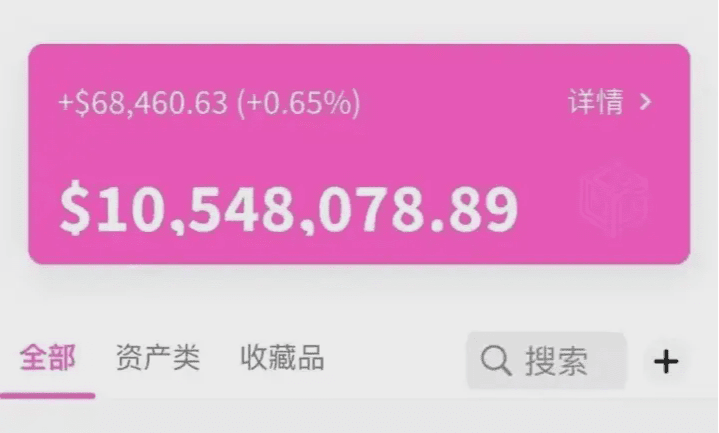
After ten years of trading cryptocurrency, from great losses to great wealth, I have come up with twenty-one trading principles. The content is not extensive, but it is of high value. Today I share it with everyone; if you understand a few of these principles, things will get smoother.
1. Each time you enter the market to buy or sell, the loss should not exceed ten percent of your funds.
Even if you make mistakes every time, there are still 10 chances to play; for example, some friends suggest using a maximum of 1/10 leverage for contracts; as long as there is one chance to tenfold your investment, you can recover your capital. Of course, I still do not hope newcomers will trade contracts.
2. Always set stop loss points to reduce potential losses from trading mistakes.
Stop losses are very important; newcomers may not feel this deeply. Stop losses can prevent unnecessary huge losses caused by unexpected events like black swan events, for example, the USDT crash, which is completely unpredictable. Almost all short positions were liquidated. Moreover, the cryptocurrency market operates 24 hours; without stop loss and take profit, trading in the market is very risky. You won't be able to sleep well, so set a proper stop loss and know the maximum loss amount; it will be much safer.
3. Never just buy and sell.
Trading frequency must be low; try to reduce it to 1-2 times a week. Newcomers wanting to train can use simulated funds; they can use very small amounts to accumulate experience, but for normal accounts, one must wait for opportunities. Trading opportunities are actually very few.
4. Never let held positions turn from profit to loss.
Many people feel particularly regretful when their positions turn from profit to loss. How to handle profitable positions so they do not turn into losses? It's simple, set a break-even stop loss once you reach a certain profit level. For example, if you buy at 10 and it rises to 13, set the stop loss at 10 or 11, so even if the market reverses, you can protect your capital from loss.
5. Never act against the market trend. When the market trend is not clear, it is better to stay on the sidelines.
To not go against the trend means to act in accordance with it. This trend is defined differently by each person, depending on their trading cycle and reference indicators; some may look at the 20-day moving average on the daily chart, while others may look at the 60 moving average on the hourly chart; it varies from person to person. Only when the direction is clear should you enter the market; mistakes will be greatly reduced.
6. If you have doubts, exit the position. Be decisive when entering the market, and do not enter when hesitant.
This must be understood personally. Whether you can hold a position is crucially dependent on confidence and trading psychology. If holding a position keeps you awake at night, it’s better not to trade.
7. Only trade in an active market. Do not trade during quiet times.
This is a particular reminder: it is best to trade mainstream coins; do not easily buy altcoins, as the depth and liquidity of altcoins have significant issues, leading to very thin trading, making it difficult to exit.
8. Never set target price levels for entering and exiting the market to avoid limit orders; only follow market trends.
Avoid subjective assumptions about the market; this is akin to guessing tops and bottoms. Trading is not analysis, nor is it prediction; you can predict Bitcoin will rise to $100,000, but when Bitcoin falls from $20,000 to $3,000, it is best to avoid it. The future is uncertain; reality is what you must truly face.
9. Without appropriate reasons, do not flatten positions; use profit stop levels to safeguard profits.
Similar to 8, do not guess the top. Take profits in batches; the way to exit profits can be an inverted pyramid; you can give it a try.
10. After a series of successes in the market, extract some profits for emergencies.
This is what the veteran finds most painful. Because everyone has times of making money and times of big profits, during which it is easy to become arrogant. Fantasy and a little relaxation of thought can lead the market to teach you a lesson. Secure profits or prospect theory are crucial. Money is only counted when it is in your hands; otherwise, it is just a pile of numbers.
11. When trading incurs losses, avoid gambler's fallacy by adding to the position to lower costs.
Do not add positions when already in a loss; remember, do not heavily leverage against the trend; this is a dead end! Many have perished this way. The premise of the 'buy more as it falls' theory is that you have enough capital. No one's funds are infinite; do not believe such statements.
12. Do not enter the market out of impatience, nor exit due to impatience.
Avoid emotional trading.
13. Willing to lose but not willing to win; cut this habit. Avoid trades that incur more losses than profits.
Many friends are very calm when they are losing, but when they make a small profit, they are eager to take profits. This needs attention; the risk-reward ratio should be reasonable, ideally with a reward at least twice the risk.
14. Do not casually cancel the stop loss set when entering the market.
Still not too much understanding.
15. Trade more, make more mistakes; wait for opportunities to enter the market, do not buy and sell too frequently.
The more you trade, the easier it is to make mistakes; similar to 3, reduce trading frequency.
16. Trade more, make more mistakes; wait for opportunities to enter the market, do not buy and sell too frequently.
The more you trade, the easier it is to make mistakes; similar to 3, reduce trading frequency.
17. Be able to go long and short freely; do not only trade one side.
This is often difficult for the veteran because being a stubborn bull can lead to losses during pullbacks. One must not have obsessions; respect the market. Reality is the most important.
18. Do not absorb just because the price is too low, nor short just because the price is too high.
Do not guess the top, do not guess the top, especially during sharp rises and falls; do not naively think that you can short or long here; you must have your own entry and exit principles.
19. Never hedge.
If a trade is at a loss, cut your losses! Do not lock positions; that is a great taboo.
20. Try to avoid pyramid scaling at inappropriate times.
Do not have too deep an understanding. Pyramid scaling works best when the trend is relatively clear; during market fluctuations, do not blindly add positions.
21. Avoid making arbitrary changes to trading strategies without appropriate reasons.
What constitutes an appropriate reason? I don't know! Trading strategies must be established in advance, such as entry signals, stop losses, position sizes, and exit signals. Once established, they should not be easily changed due to volatile market conditions.
Success is not accidental; opportunities are left for those who are prepared. Follow the public account (July Returns), a helmsman skilled in combining short and medium-term wave arbitrage is here. In the future in the cryptocurrency circle, regardless of market conditions, I will walk with you all the way.
No more nonsense; let’s get straight to the point on how to quickly make 10 million RMB in the cryptocurrency market!
Just rely on this trick (candlestick trading method) to effortlessly gain a hundredfold profit, with a win rate as high as 90%. You are just one step away from 10 million; it's worth collecting! Trading cryptocurrency doesn't have to be too complicated; sharing the simplest trading strategies in the coin market <Candlestick Trading Method > often, the simpler methods are the most profitable.
Judging if a candlestick is bullish or bearish actually revolves around who has more persuasive power between the body and the upper and lower shadows.
The principle is: when bulls dominate, the bullish candlestick bodies are full and close near the highs; when bears dominate, the bearish candlestick bodies are solid and close near the lows.
When there are long upper and lower shadows or doji candlesticks, it usually means a tug-of-war between bulls and bears, with neutral market sentiment and unclear direction. This type of candlestick pattern represents hesitation from active funds, and the market lacks continuity, making it unsuitable for aggressive trading.
For example, the Bitcoin daily candle on June 15, 2025, is a typical bullish-bearish balance signal.
Most new traders tend to fall into two extremes when understanding candlestick patterns: one is judging trends based solely on a single candlestick, neglecting position, structure, and context; the other is having a weak foundation, where even clear signals do not inspire action.
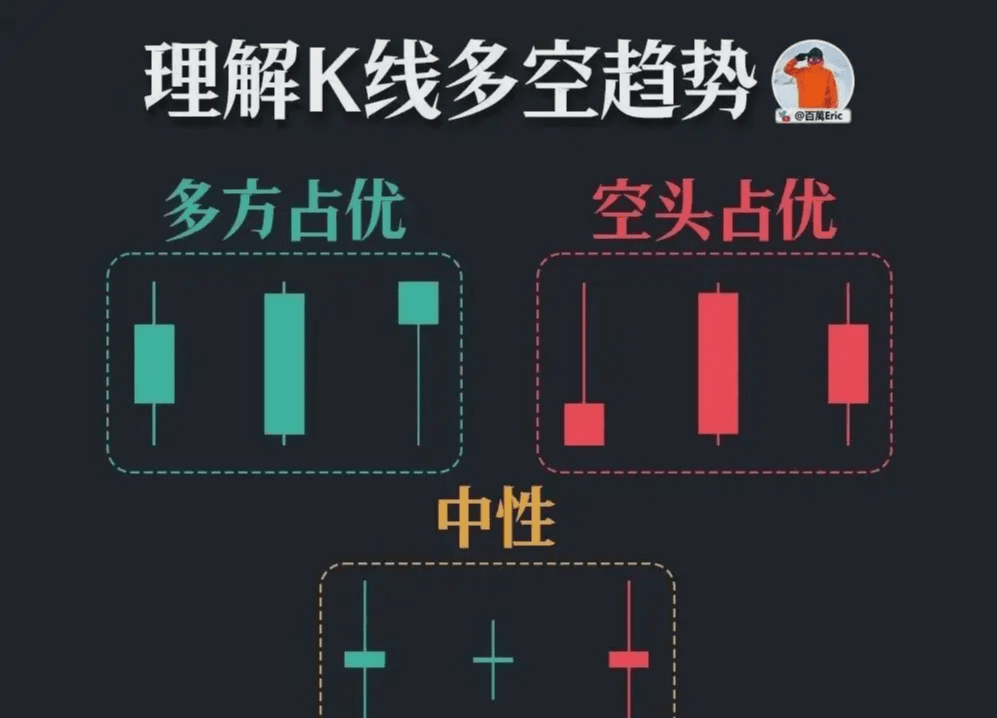
These candlestick signals are essentially tools for judging market turning points or trend continuations.
Usage principle: The signal itself cannot be used alone for decision-making; it is only of greater reference value when at a key position, following the trend, and layered with volume or structural resonance.
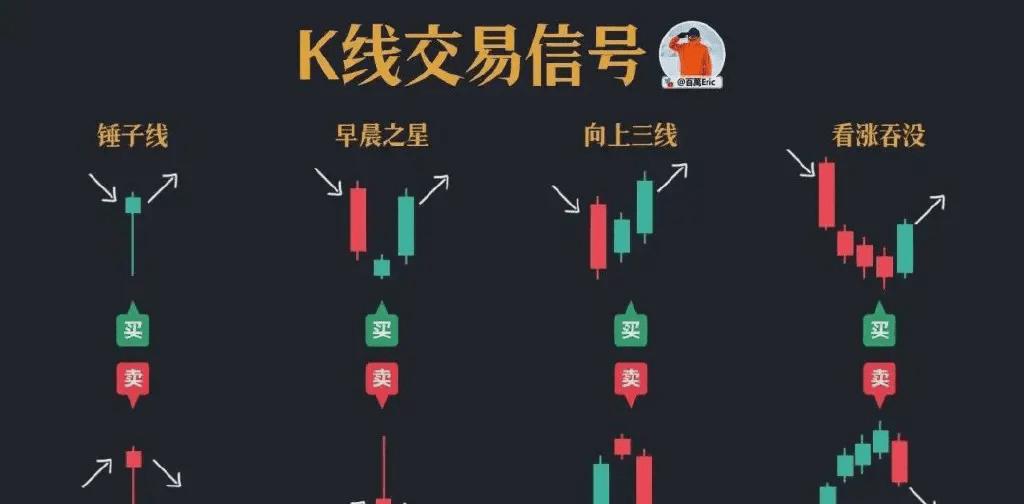
The same price pattern can have vastly different win rates based on details.
For example, patterns like oscillation and double bottoms are only meaningful when confirmed to break out at key positions, paired with strong volume; chasing in positions where the patterns are not yet complete or the pullback is inadequate can easily lead to being caught off guard.
For example, the head and shoulders top pattern often mentioned by teachers, regardless of whether it's applied in a 1-hour or 1-month period, only counts as an effective signal when the structure is established and confirmed to break the neckline.
So, in actual operations, don't just focus on the pattern itself; the pattern is just analysis, which is the first step of a trade.
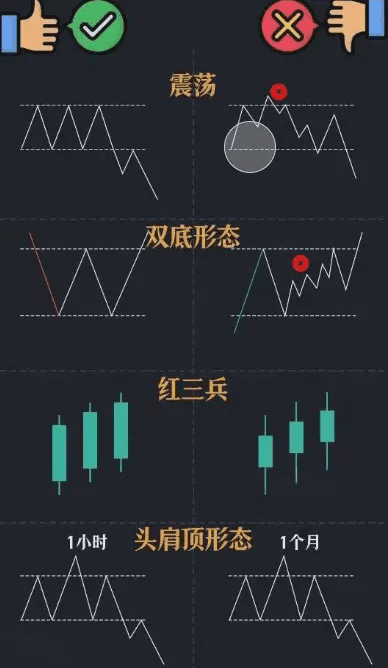
The turning point of a trend often only occurs after the structure is broken.
The principle is: as long as the highs and lows continue to decline and the structure does not change, the trend will still follow the original direction.
Once the trend line is effectively broken, and subsequent flags, wedges, and other consolidation patterns appear, with increased volume leading to a breakout, this signals the start of a new upward trend.
In actual operations, wait for structural changes and confirmation of forms to enter the market together; the win rate and confidence in holding positions will be much higher. Don't guess the bottom before the structure breaks.
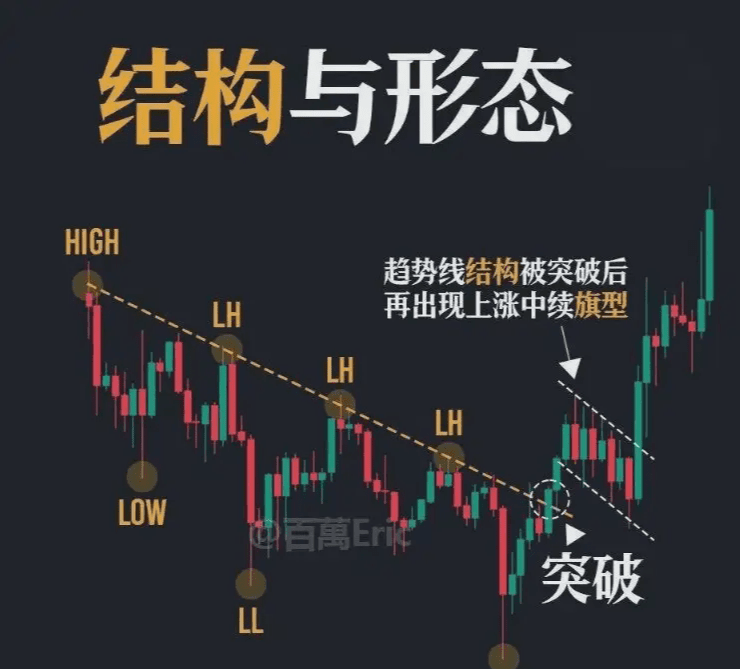
Breakout retests of price structures require double confirmation to be more reliable.
The first step is to see that the original resistance level has been effectively broken and turned into new support.
The second step is to show obvious bullish signals, such as hammer candlesticks or bullish engulfing patterns, preferably with volume to support the retest of support.
Only when both of these steps appear should you follow through with buying, as the margin for error will be higher.
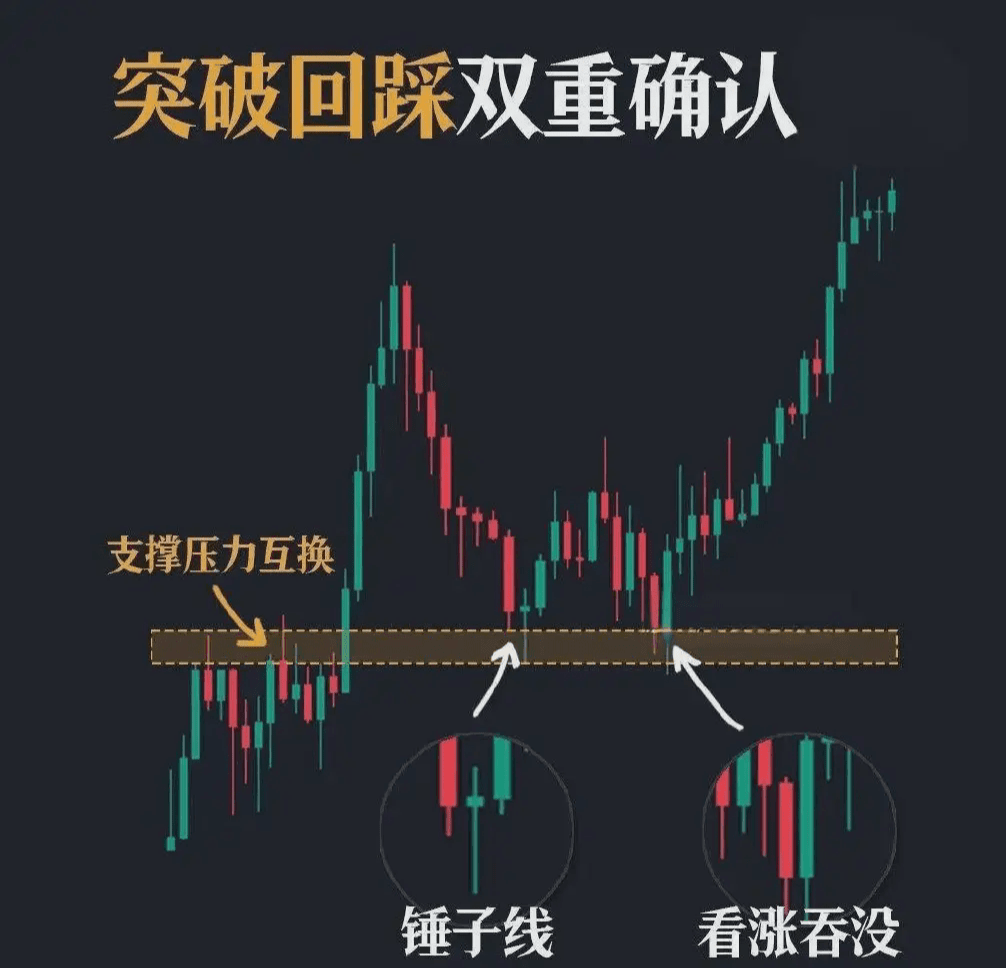
The four steps of breakout retesting essentially wait for the market to provide clear signals before taking action.
First, there must be a clear resistance or support level; second, wait for the price to break out and then confirm that this position has turned into new support; finally, only then consider entering the market and must set stop losses and take profits - 1.5R for beginners, above 2R for veterans.
Do not rush to enter the market if any step is not in place; true opportunities are usually safer after confirmation.
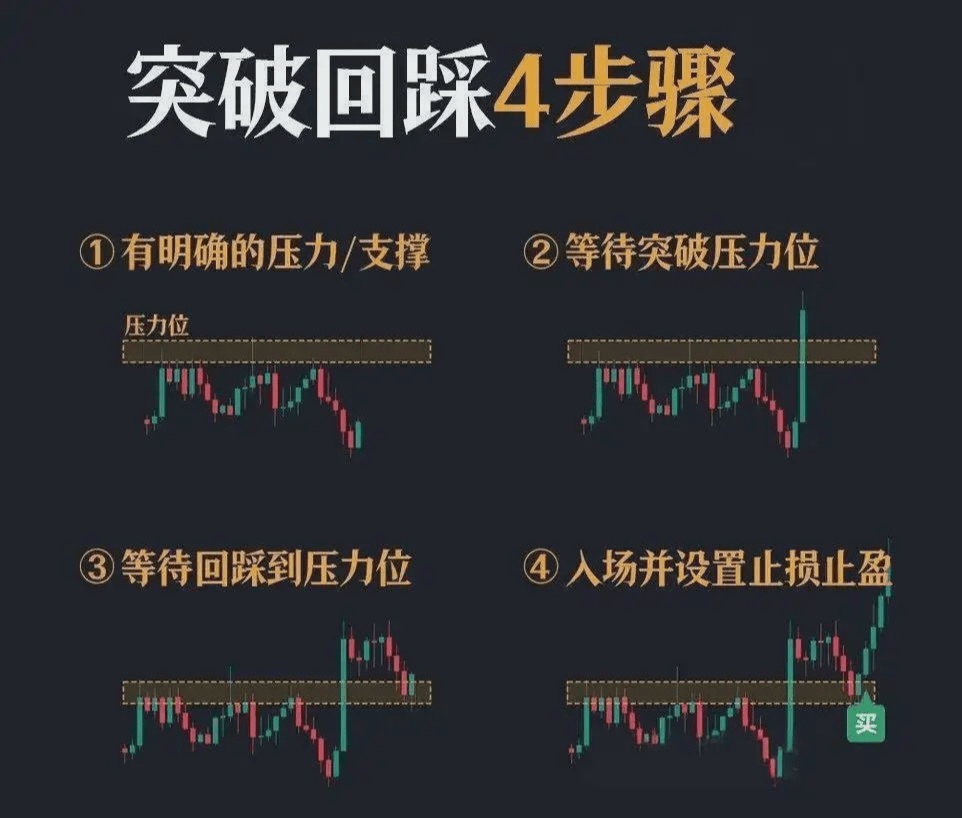
Key candlestick patterns (candlesticks) are just tools; when actually trading, you must combine them with trends, positions, and volume to judge their significance.
A single candlestick signal has limited effectiveness; consider participating when there is multiple resonance, at key positions, and strong volume; otherwise, it is easy to be misled by false signals.
In actual trading, patterns are references, not beliefs; always look at the overall environment before making decisions.
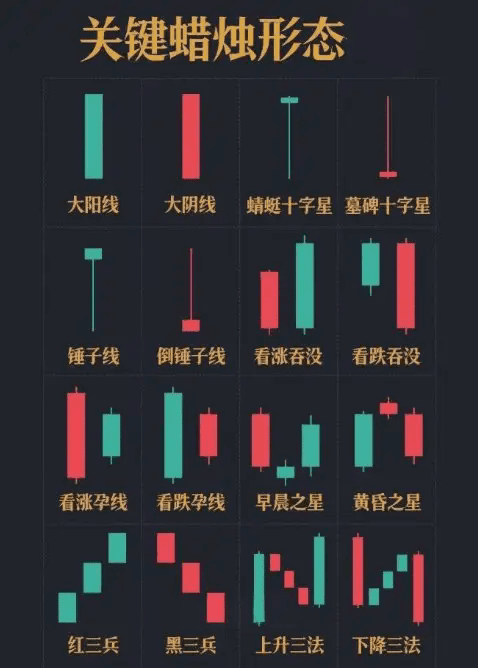
Trading discipline > predictive ability.
Choosing a trading style depends on whether you are better at following trends, capturing breakouts, or grasping extreme reversals.
Each method has a suitable market environment.
What you need to do is find the match between market and strategy, execute thoroughly, avoid greed, and avoid hesitation.
Because trading ultimately relies not on whether you can predict the future, but on whether you can adhere to discipline.
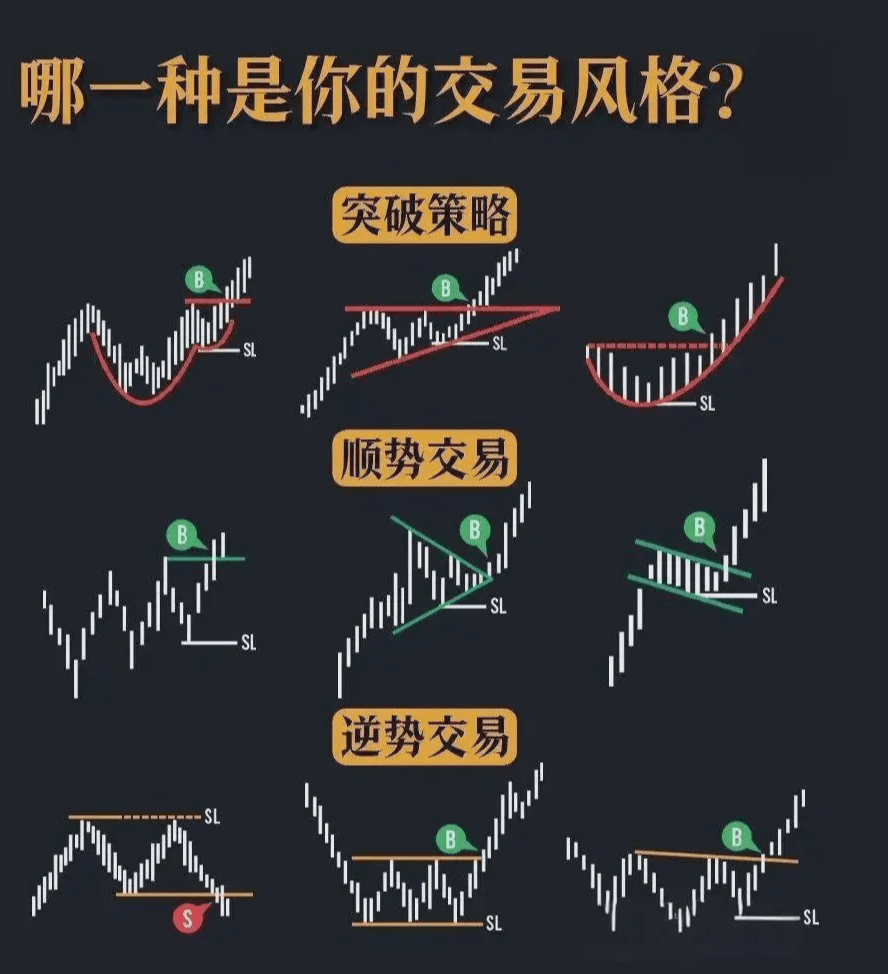
The morning star pattern only has real reversal significance when the rebound effectively breaks through previous highs.
When judging, look at whether the bulls can thoroughly digest the bearish pressure in one go and whether there is significant follow-up buying.
If there is only a slight rebound and the highs are not surpassed, then it is merely a weak correction during a downtrend, not worth going long.
Only consider following the trend when a strong breakout occurs; otherwise, continue to observe.
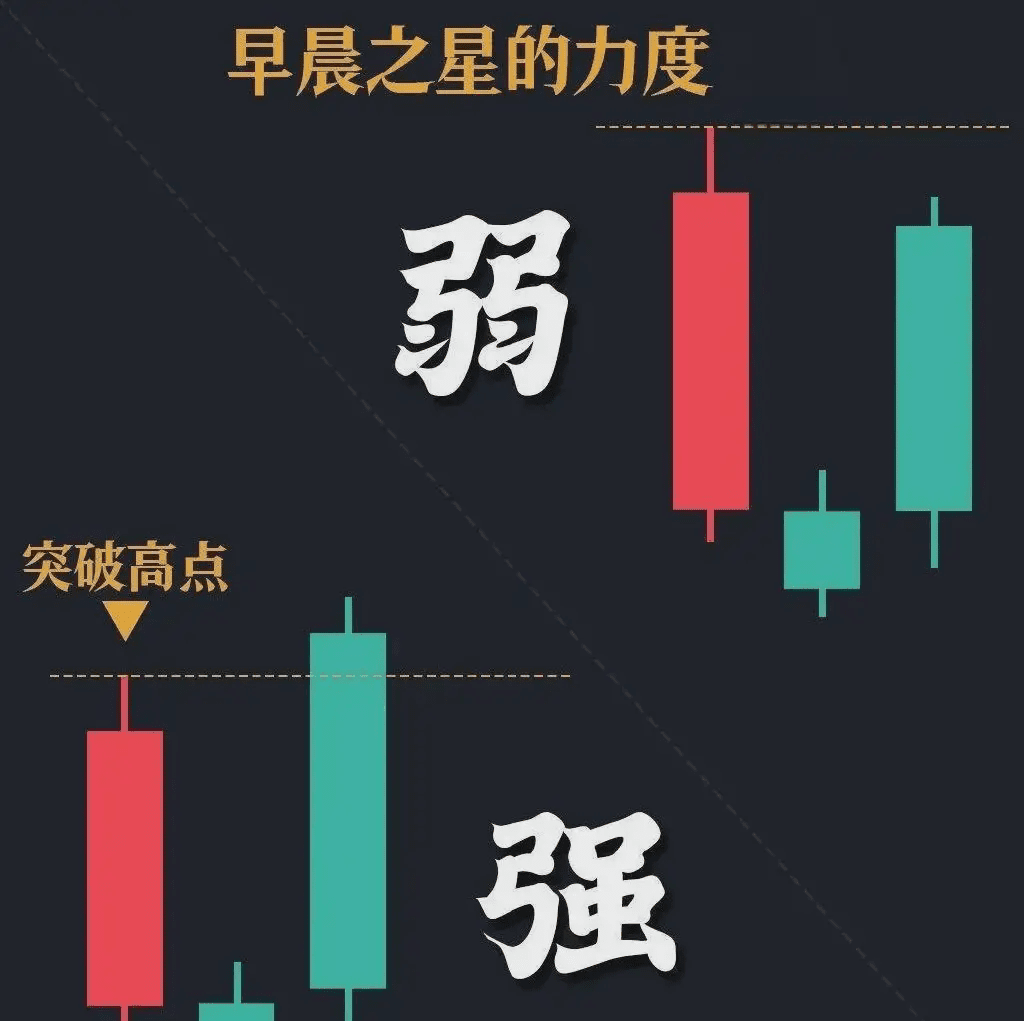
Bearish candles should be judged based on position and volume.
Inverted hammer candlesticks, shooting stars, and engulfing patterns only hold practical significance for trend reversals when they appear at the end of an uptrend, have volume and long upper shadows or are suppressed by large bearish candles.
When encountering this pattern, focus on whether there is subsequent shorting strength following it. If it continues to fall or increases volume the next day, you can follow the trend to short.
If it is just a single signal and the bulls are still firmly supporting, do not blindly short; wait for confirmation before taking action.
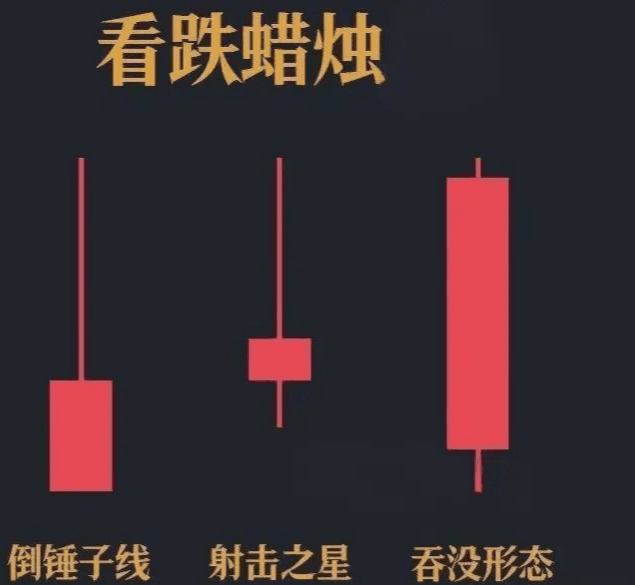
Only when buyers or sellers continuously dominate will the market trend continue smoothly.
Once candlesticks show hesitation or a tug-of-war, the advantage of active participants may weaken; at this point, it is more suitable to adjust positions to avoid profit pullbacks caused by counter fluctuations.
Profit pullbacks not only affect paper gains but can also easily trigger traders' doubts about the market, thereby increasing psychological pressure and possibly leading to counter trades or holding positions.
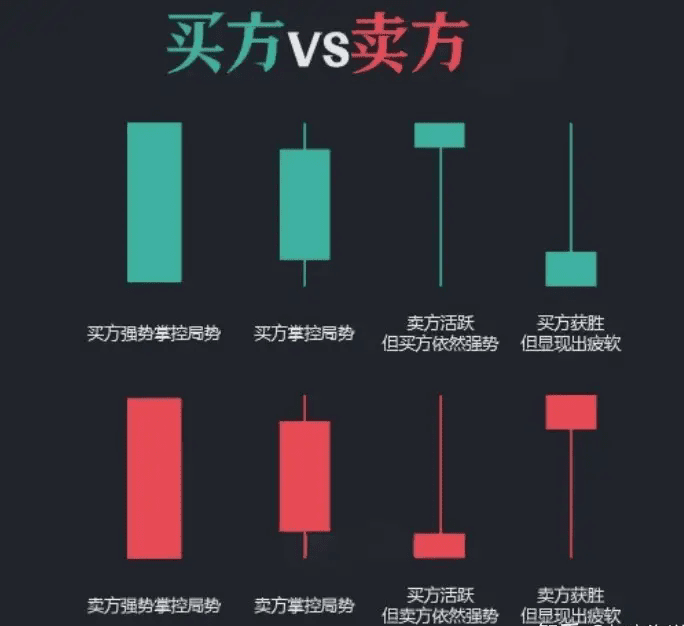
Breakouts only establish an effective bullish structure after confirming support through a retest and entering a new round of continuation.
Otherwise, simple breakouts are just pseudo-strong trends, and there may be 'false breakouts' at any time; do not blindly chase rising prices.
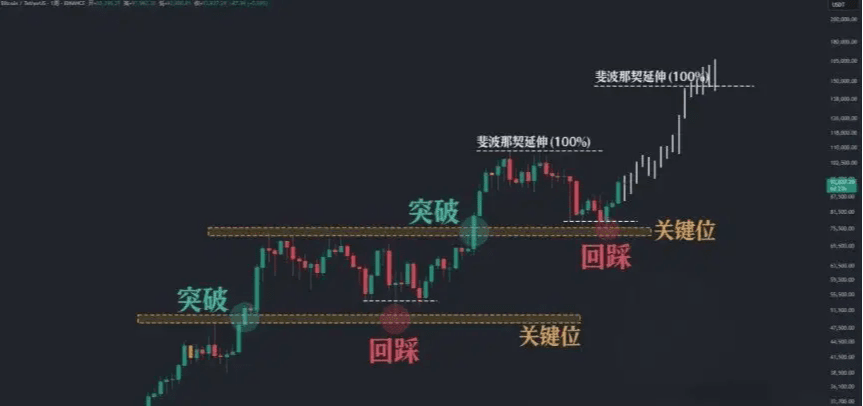
Only when the price breaks through and solidly stands at a key position with subsequent price action provides continued confirmation is it worth entering the market in line with the trend.
Otherwise, when encountering false breakouts or signals lacking continuity, decisively avoid them to prevent being misled.
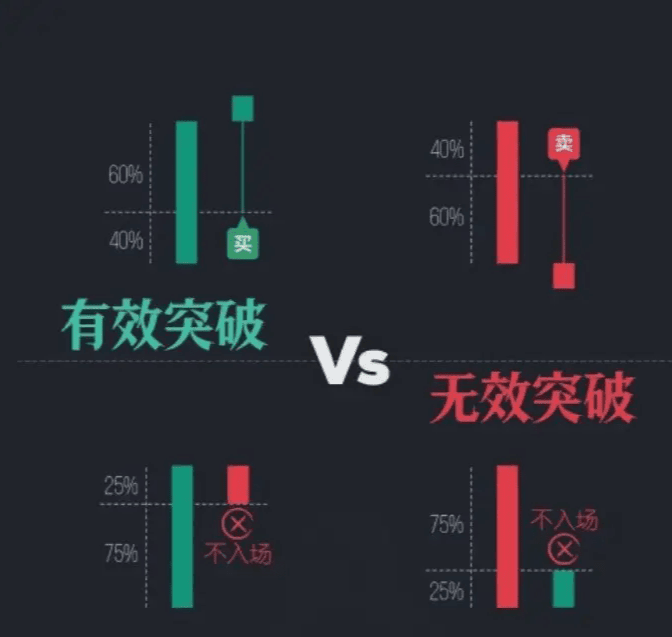
False breakout
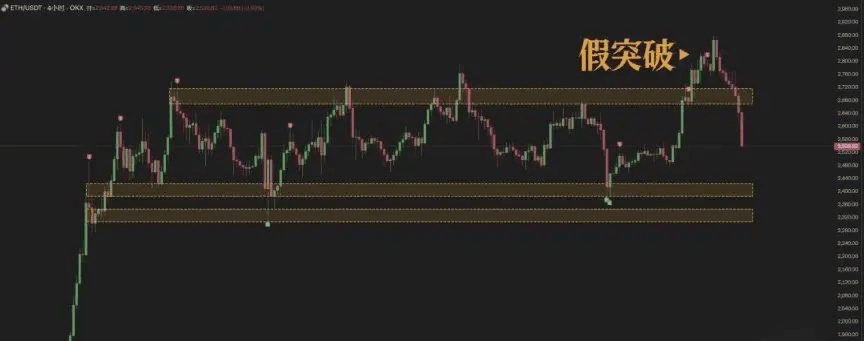
Plan your trades, trade your plan.
It is better to incur a small loss according to strategy than to engage in subjective fantasy.
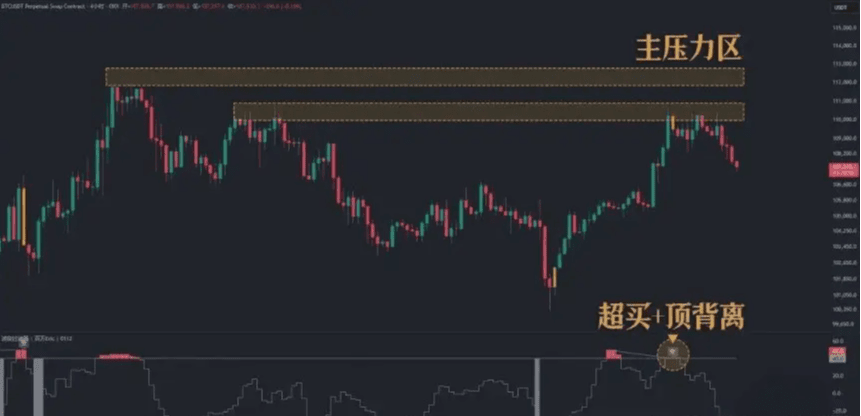
Traders often have their epiphanies not through sudden realizations but through incurred losses.
Heavy positions, frequent trades, stubbornly holding losses, chasing highs and selling lows, predicting the market...
You will understand by stepping into these pitfalls: good traders are shaped by their losses...
There are actually only two truly high odds opportunities:
The first time is 'the first oversold after acceleration,' which is the most profitable but also the most volatile and risky.
The second time, the overbought signal triggered today at the main pressure point belongs to a clearly defined structure, providing a simple shorting opportunity.
Other than that, the remaining trends and signals only manage the value of held positions.

Question: I feel a bit anxious as soon as I get a profitable position, what should I do?
Answer: According to prospect theory: when facing profits, people tend to be risk-averse - 'protect profits'; when facing losses, they become risk-seeking - 'continue to gamble.'
This is not a personal issue, but a human weakness all traders must face.
To solve this problem, the only way out is to: familiarize yourself with your strategy, understand its advantages and limitations, and strictly earn money within the framework of the strategy.
To put it bluntly, successful traders gain experience through rational losses, not by winning from 'seeing things right.'
Put your mind in gear, keep your position small, and treat your trades like practice questions; start with 1000 trades ~
Four common entry methods for the head and shoulders top pattern:
1. Enter the market early after confirming the high point of the right shoulder, betting on the beginning of a reversal.
2. Enter after the price breaks below the neckline, which is a confirmation type operation at the trend turning point.
3. After breaking down, if there is a rebound testing the neckline, once the neckline pressure is confirmed, enter in line with the trend; such operations carry lower risk.
4. If a large bearish candle breaks out with volume, you can directly short to capture the acceleration phase brought by extreme emotions.
These four types of entries actually represent different balancing points of risk and reward, depending on your judgment of the strength and rhythm of market reversals.
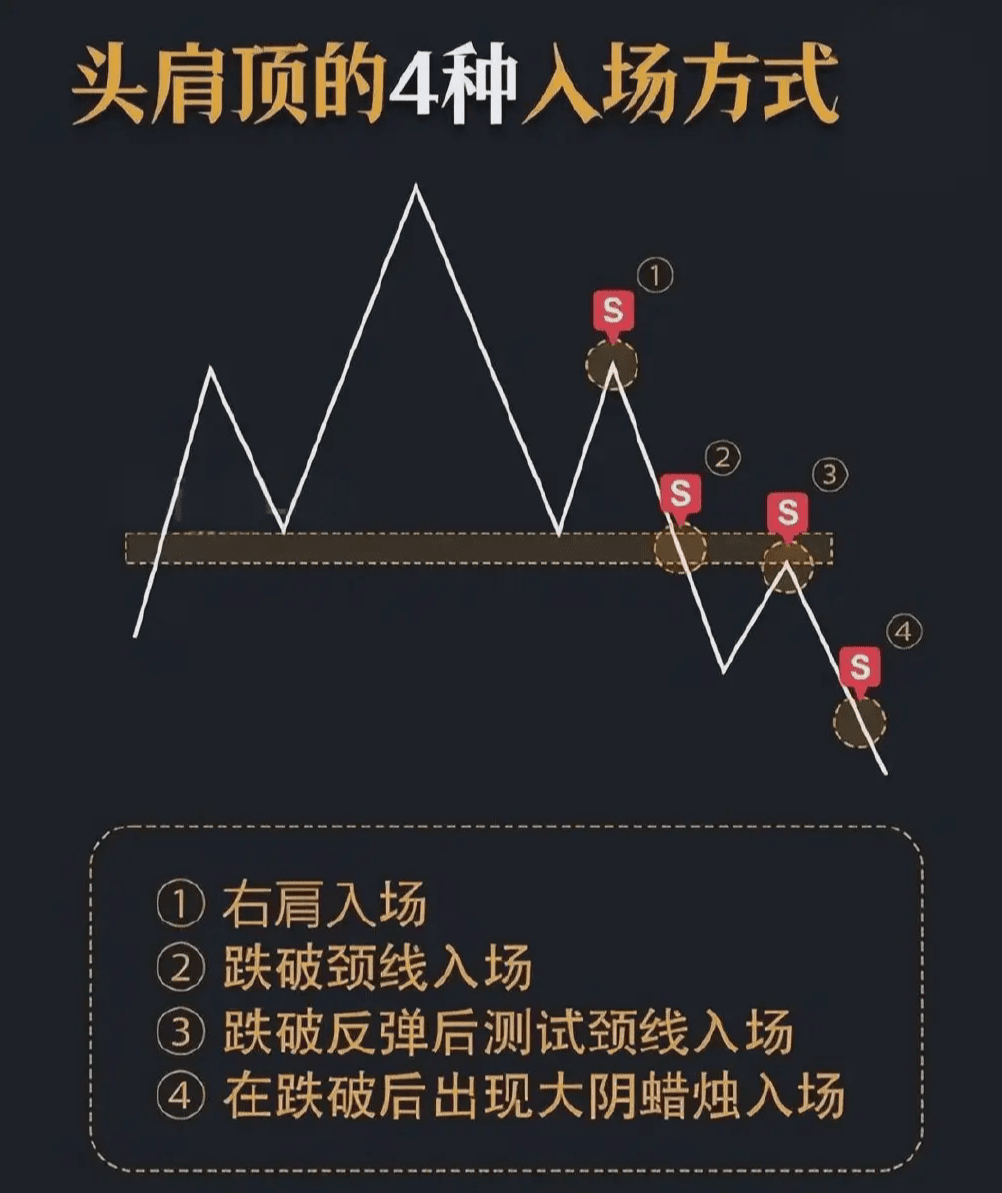
The standard trend line breakout process is divided into three steps:
First, during the uptrend, the lows are continuously raised (HL), which builds bullish confidence with trend lines.
Second, the key point is the trend line is first breached, and no new high appears, indicating the structure is weakening.
The third step is that during the first retest after a breakout, if the price cannot recover, the original trend line turns into a resistance level, marking a complete trend reversal.
In this process, the core judgment is not mechanically drawing lines but recognizing the critical changes in raising lows to turning points, combined with the response of retesting pressures to clarify the operational direction.
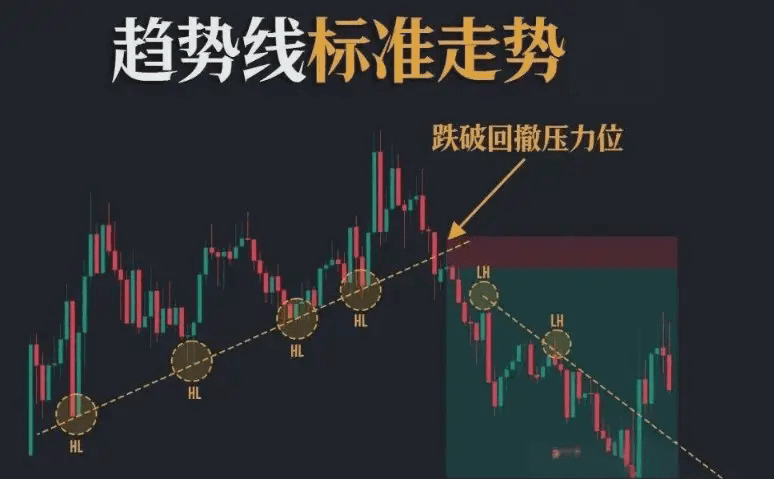
A structure can give rise to five trading opportunities; this is not by coincidence, but because each entry angle is solving a different problem:
1. Trend line entry: Watching the rhythm, the trend line is moving upwards, showing that the bullish rhythm remains intact; as long as it doesn't break, it is worth betting on.
2. Horizontal support entry: Looking at the range, the market repeatedly bounces back here, indicating this is the boundary between bulls and bears; a retest confirms a second opportunity.
3. Fibonacci retracement entry (0.618): It looks at where most corrections stop at this golden ratio position, betting that 'after a significant rise, it needs to take a breather.'
4. Candlestick pattern entry: such as engulfing, hammer, focusing on reaction. Candlestick patterns are the direct expression of market intentions.
5. Entering with stacked Buffs (trend line + horizontal line + candlestick):
Look for resonance; multiple clues overlapping at the same position are the closest to the 'highest probability' trading points.
These five types of logic have no right or wrong; it only depends on which angle you choose to view the market.
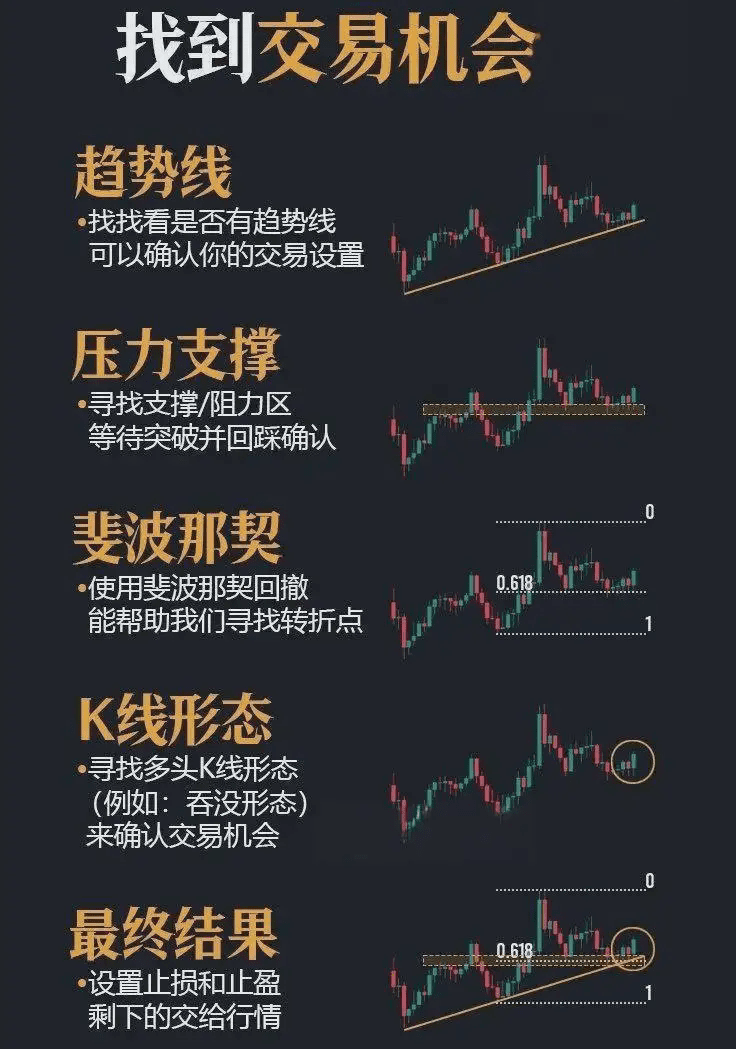
The double top pattern is a typical top reversal signal.
Its core logic:
The first step is that the price has two unsuccessful attempts to hit the same high point, forming a clear resistance level.
The second step is that both retracements occur in the same support area.
The third step, once support is effectively broken, the pattern is established.
The rebound retest that fails to reestablish this area is an opportunity to add positions or follow the trend to short.
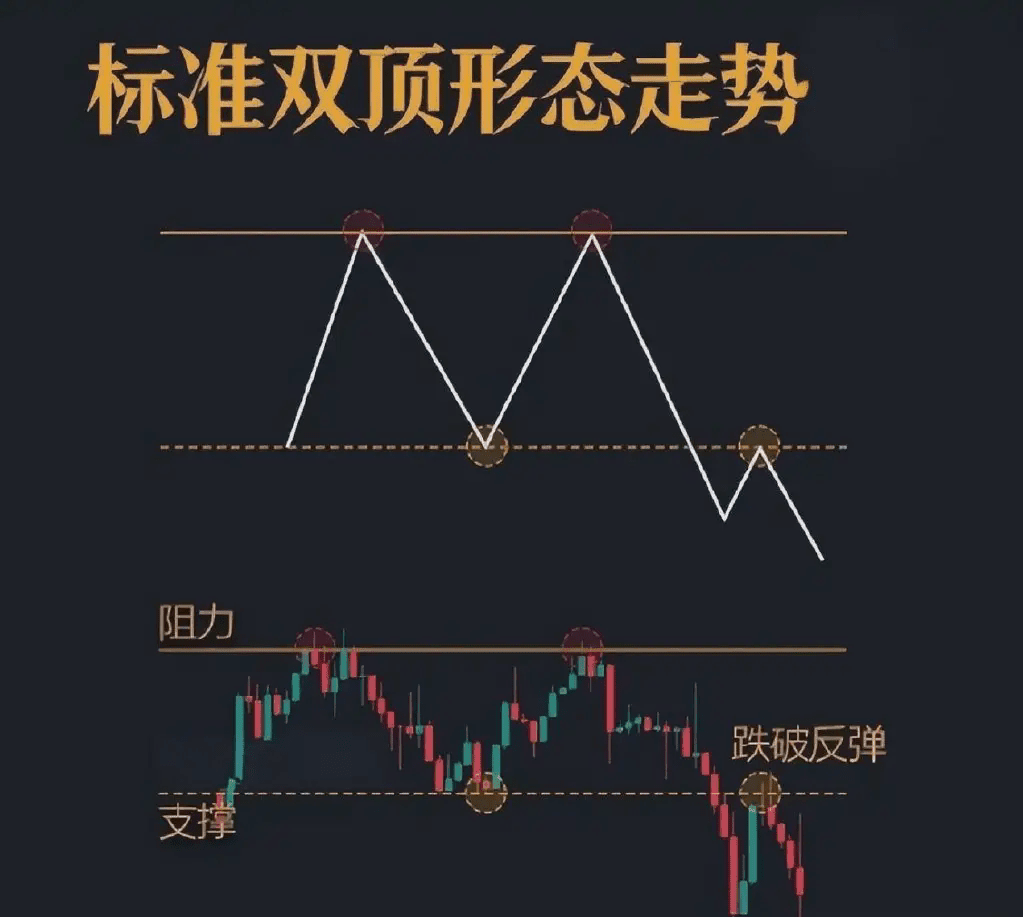
Candlestick patterns are a compressed expression of the behavior of all market participants within a unit of time.
Such compression is often accompanied by a lot of noise, obscuring the true price intentions.
Real meaningful interpretations must be based on key structures, not from thin air.
To put it simply: only trade the strongest candlestick patterns; neutral candlesticks are noise.
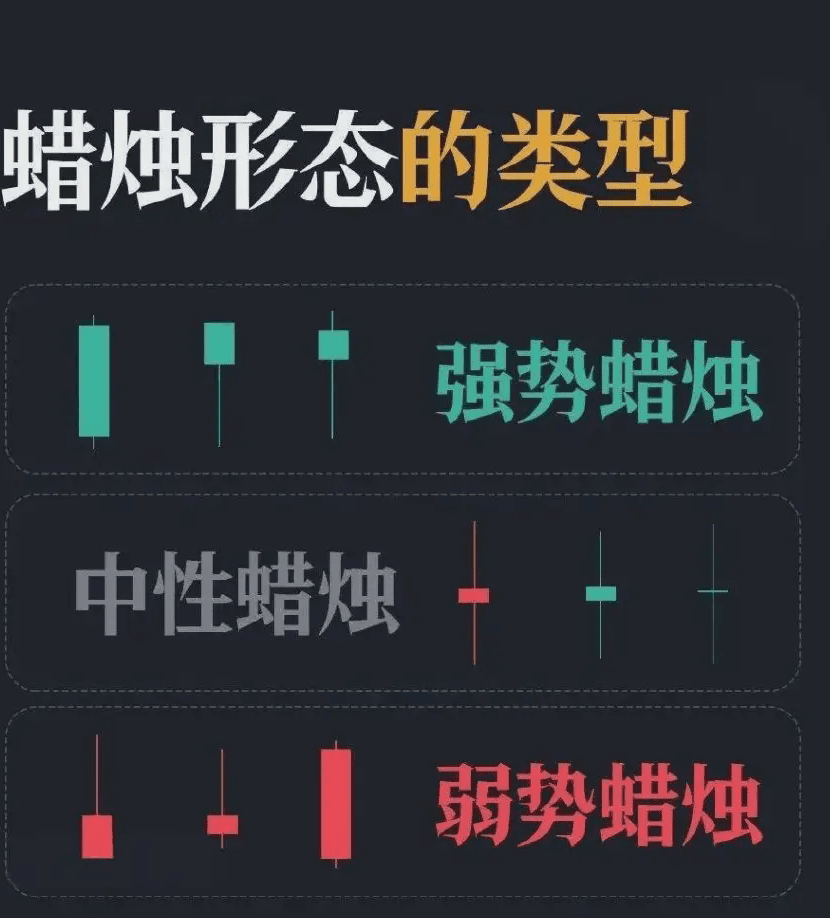
Seeing a hammer candlestick does not mean you should bottom fish; an inverted hammer candlestick does not mean you should short immediately.
These types of candlestick patterns do not represent direction by themselves; their true significance lies in helping you draw a clear stop loss anchor point.
As for whether to take a position, you still need to judge based on the overall structure, key positions, and trading volume.
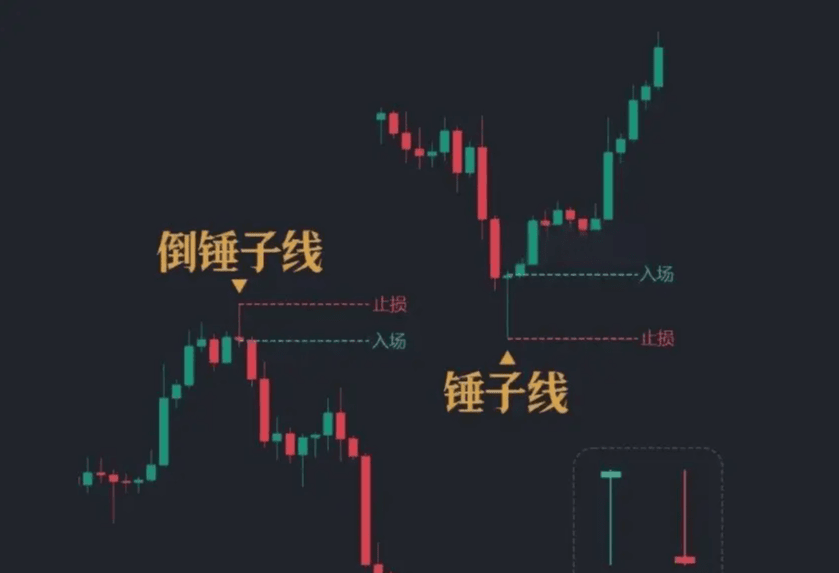
Relying solely on trend judgments is insufficient; merely observing candlestick signals is also inadequate. However, if the trend direction and price behavior resonate, it can greatly enhance the certainty of trading.
For example, in a downtrend, when a pullback tests the Fibonacci 0.618, and reversal patterns like dusk stars or engulfing patterns appear.
This is the dual confirmation of position and structure.
Lastly, a reminder: 0.618 is not a holy grail; it is just one of many tools and proportion references; do not be superstitious.
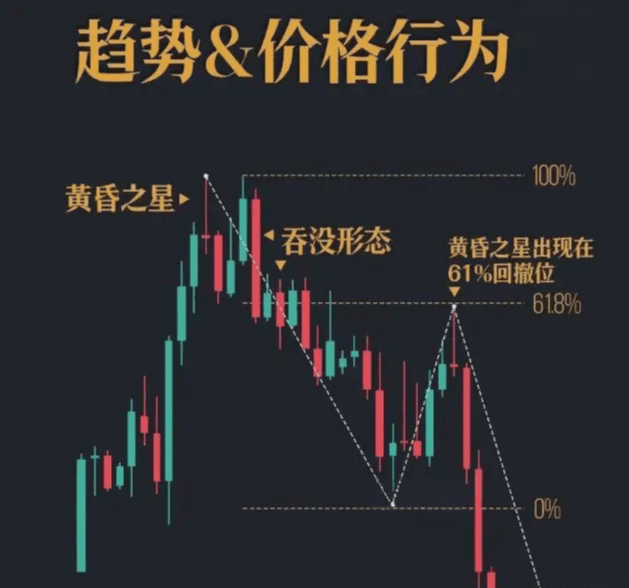
Three shorting signals under bearish structures; the core is waiting for a rebound confirmation, not blindly chasing shorts.
① Previous high resistance level: The price rebounds to touch previous high points and shows stagnation or volume reversal; this is the first signal to enter the market. At this time, the market attempts to counterattack but fails, and the bears organize defenses here.
② Secondary rebound confirmation: After a decline, there is another rebound, but it fails to surpass the previous high, forming a clear 'lower low and lower high.' This rebound usually has reduced volume, constituting the second opportunity to short under the structure.
③ Confirmation of breaking previous lows: When the previous low point is effectively breached, the trend is further confirmed; wait for a small pullback, which is the last confirmation signal point for following the trend to short. At this time, trading leans towards caution, and the stop loss point is clear and defined.
Trend structures are symmetrical; how to short a bearish structure is how to long a bullish structure, just in the opposite direction, but the logic is exactly the same.
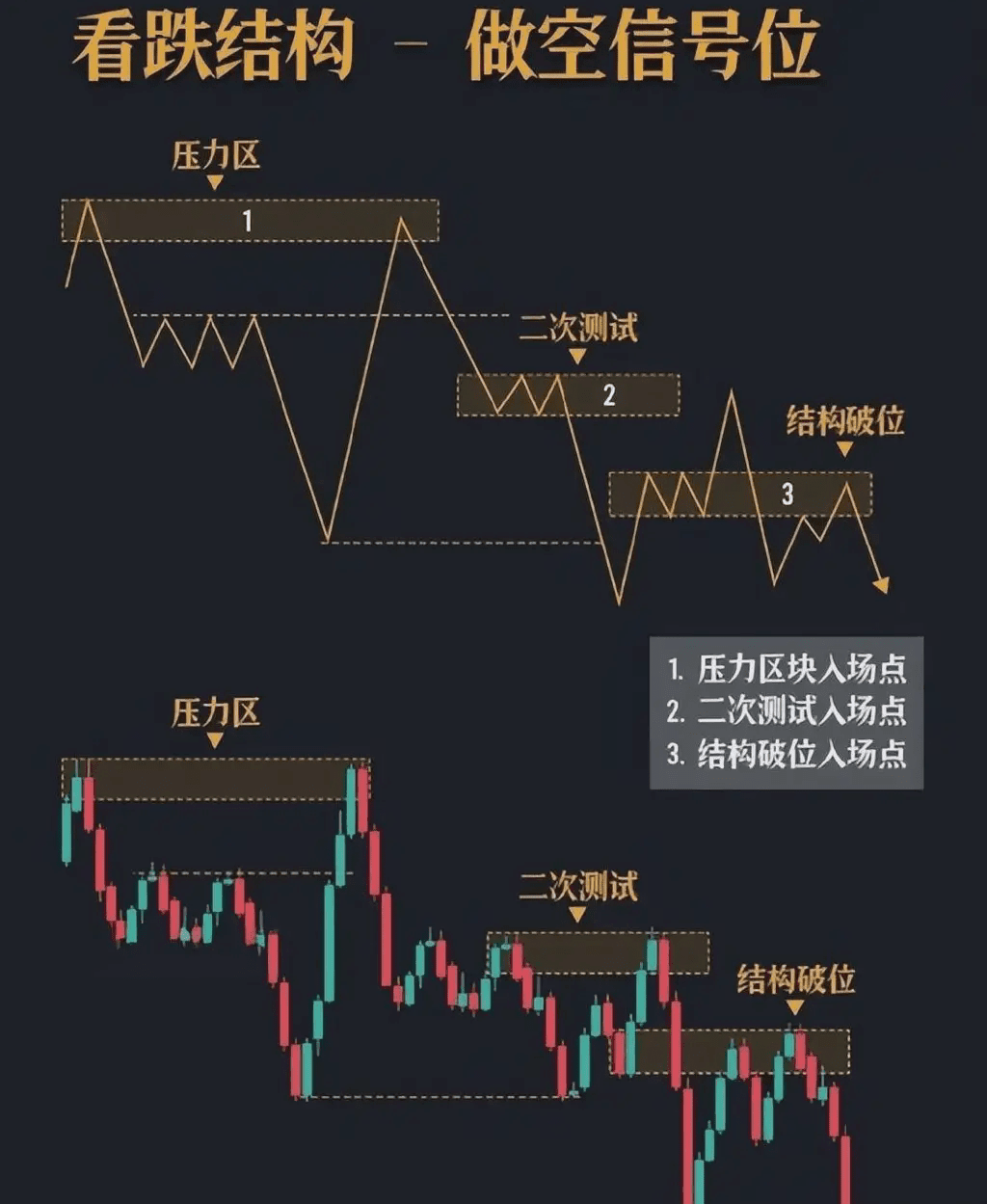
Breakout retests to go long, breakdown retests to go short.
Only trade these two patterns to reduce trading anxiety by 80%.
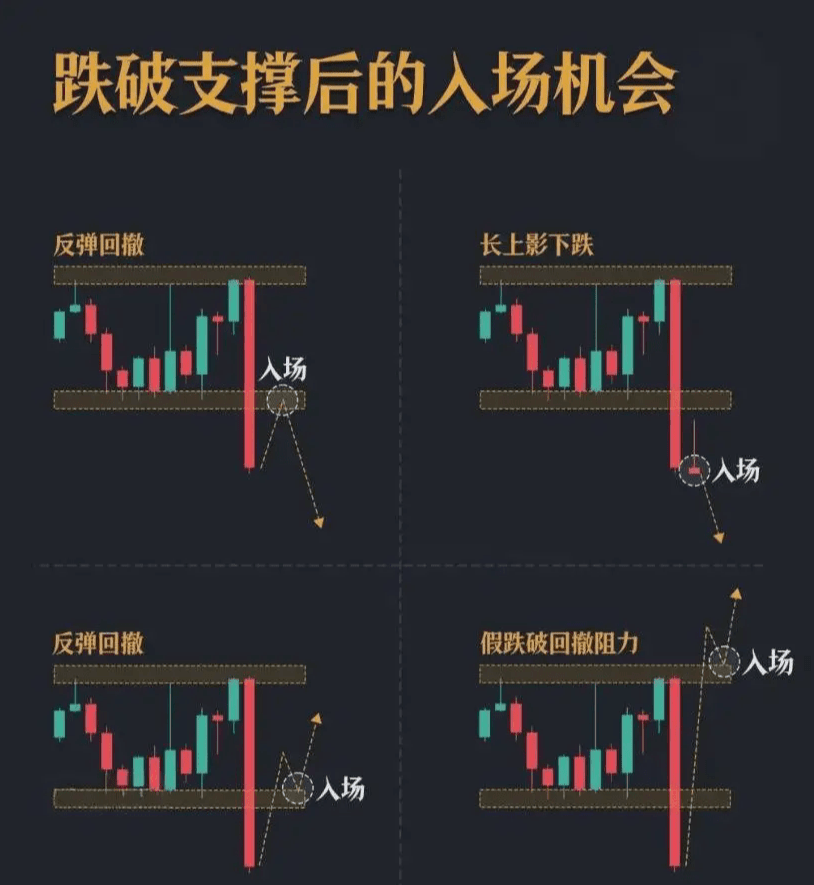
Candlestick patterns only count as real signals when combined with confirmation.
The principle is: you cannot only look at a single candlestick; you should also observe whether a subsequent 'confirmation candle' follows, such as a big bearish candle appearing after a dusk star (shadow candle), which then has reference significance for turning points; otherwise, it is invalid.
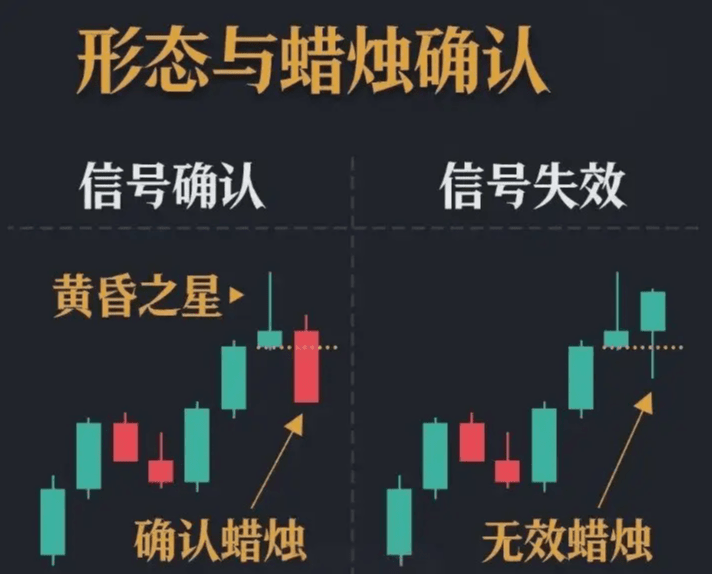
Doji
Its appearance does not indicate a reversal or entry signal; it only implies: the bullish and bearish forces are temporarily balanced, market direction is hesitant, and both buyers and sellers choose to observe and not take action.
In other words, a doji candlestick should be treated as a warning signal rather than a trading reason.
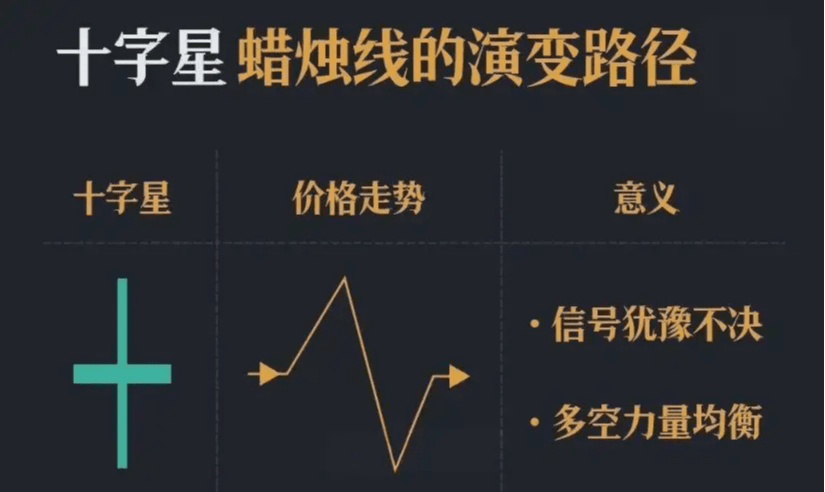
The time window is a core component of the trading system.
Different time levels correspond to different trading logic rhythms.
Common short-term time windows are 30 seconds, 3 minutes, and 5 minutes.
(You are not mistaken; during work, I learned to read 30-second charts from my boss.)
Swing trading often focuses on 30 minutes, 1 hour, and 4 hours.
Trend trading typically uses 4 hours, daily, or even weekly charts.
The choice of time window should serve your strategy, not your emotional impulse of wanting to make quick money or slow money.
In other words, every time window can make money, but you cannot catch every opportunity in all time windows. Because signals will inevitably contradict each other, switching too much will only lead to confusion.
The risk-reward ratio determines whether you can survive long-term.
The principle is to only pursue opportunities with small stop losses and large potential rewards, such as at least 1.5:1 or higher risk-reward ratios.
When judging, the stop loss position must be reasonable and not too far; the take profit target should be combined with structure and trend, avoiding blind greed.
In actual operations, do not overlook the risk-reward ratio just because the win rate is high; only if the risk-reward ratio is sufficient, even with average win rates, will there still be profits in the long term.
Before entering each trade, calculate the risk-reward ratio; if it doesn't meet the criteria, decisively abandon it.
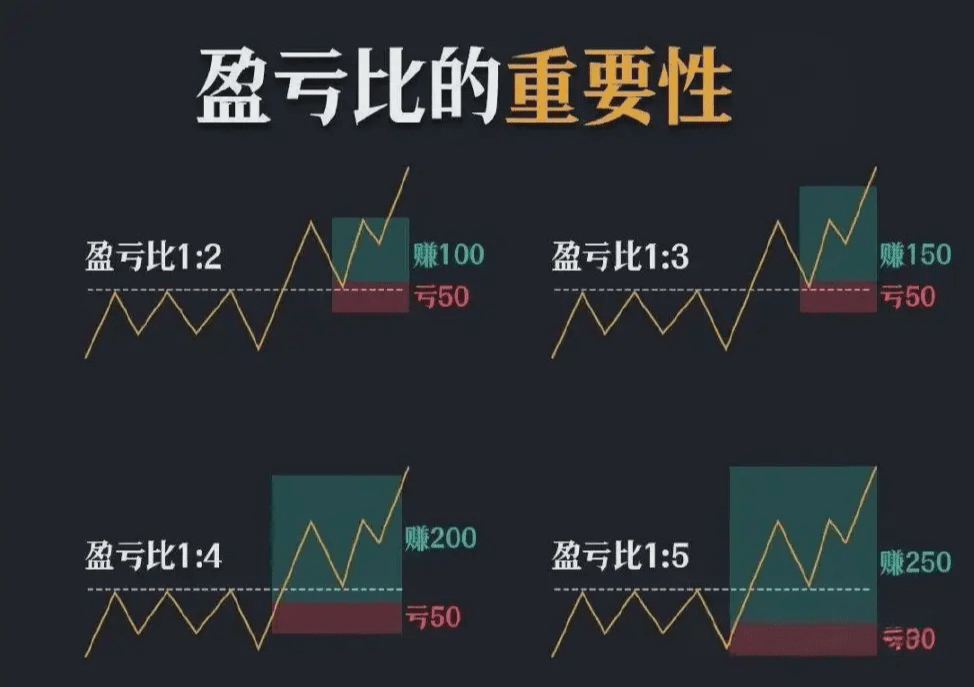
Demand Zone
The positions where major funds repeatedly accept trades attract large buying pressure every time the price retests this area, indicating strong buyer intent.
When judging, consider trading volume: if there is an increase in volume near the demand zone, it indicates large funds are involved, increasing the probability of a rebound.
Conversely, if the drop back to the demand zone sees shrinking volume but then surges again with increased volume, it is typically indicative of major players controlling the market.
In actual operations, only when there is resonance between the demand zone and high trading volume is there an entry value. Demand zones without volume or without major player support are prone to failure; do not blindly bottom fish.
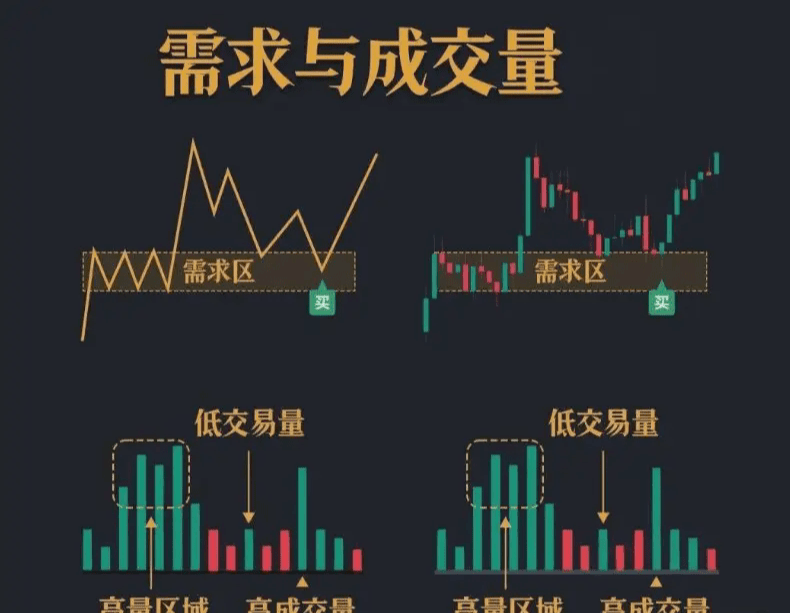
The core of the breakout strategy.
1. Continuously higher lows indicate bullish control, and the bottom is increasingly stable.
2. There is a clear resistance level above; once broken, it can easily trigger acceleration.
3. Sufficient space above the resistance area, without new resistance interference.
In actual operations, wait for the price to break through the resistance area with volume before entering, and set the stop loss below the resistance level.
Once the conditions are not met, such as the lows not being raised or the pressure level being broken cleanly, be cautious; do not chase after false breakouts and get hit.
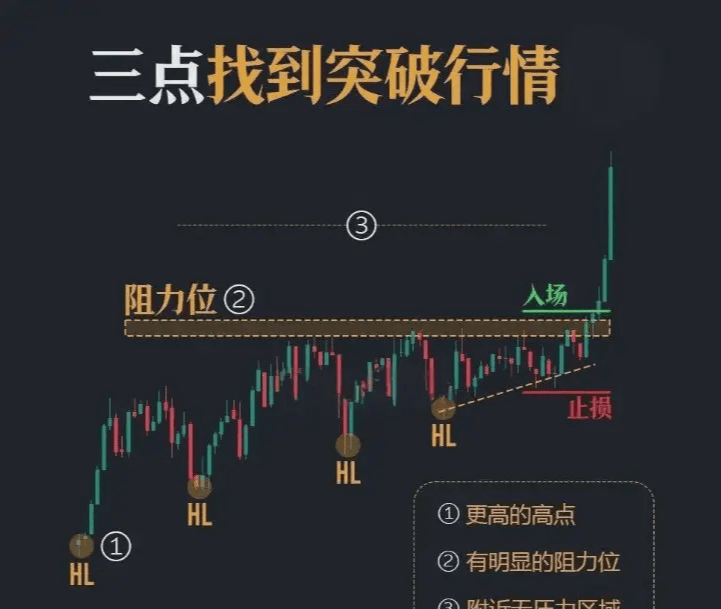
In speculative markets, there is only one thing that can truly protect you: stop loss.
Regardless of whether you use macro policies, technical analysis, on-chain data, sentiment indicators, or intuitive predictions, they are all just a way to interpret the market during a specific time window.
They can help you earn specific money from a specific perspective, but they cannot protect you from blowing up at the wrong time.
You can earn a sum through countless methods, but only through stop losses can you avoid losing all methods.
Three types of swing trading strategies.
The essence is always about switching around ranges, moving averages, and extreme points.
The oscillation strategy is to buy high and sell low in a range, clearly defining support for buying and resistance for selling, and do not chase breakouts.
Retest strategies focus on trends where prices pull back to moving averages before following the trend; only trade on pullbacks, not on chasing highs and lows.
Counter-trend strategies should only be implemented when significant reversal signals appear at key support and resistance areas, and must not be forced against strong trends.
Each method must wait for conditions to mature before execution; do not blur styles, control your stop losses, and the win rate will naturally be high.
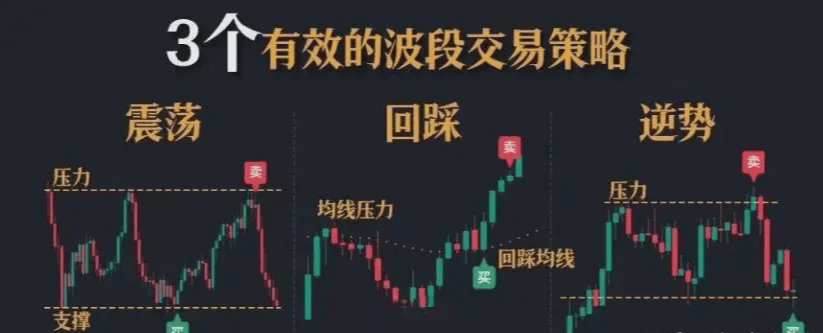
Judging a downtrend is actually very simple; just look at four core signals:
1. The trend line continues to decline: Drawing the trend line by hand, every round of rebound does not surpass the previous high, and the bearish pattern is evident.
2. Pressured by moving averages: Whether MA or EMA, prices are consistently held below key moving averages with weak rebounds.
3. Continually lower highs: The price structure is clearly downtrending, with each rebound halted at previous high resistance levels, and the pattern is consistently weakening.
4. Confirm the death cross of the two moving averages: the short-term moving average crosses below the long-term moving average, establishing a 'death cross,' confirming the bearish trend.
Remember: trend judgment is only the first step; the key lies in position management and setting stop losses; always trade by rules, not by emotions.
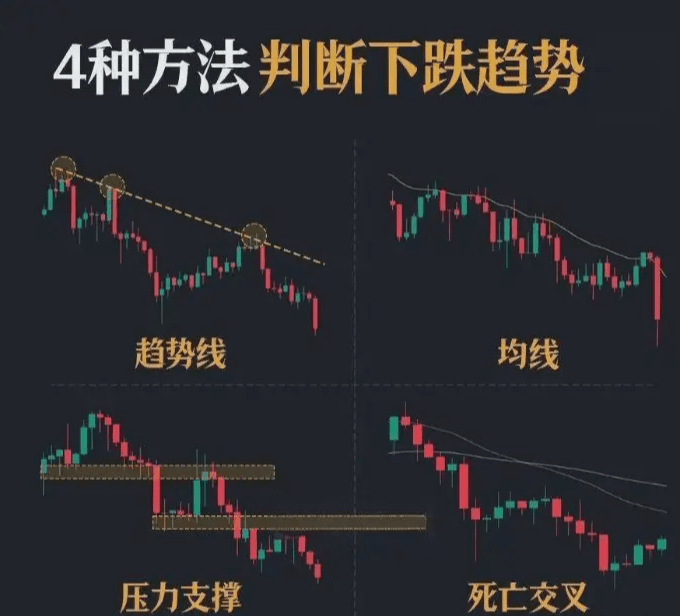
Finding entry positions, the key is to wait for signals to appear and get confirmed.
The principle is: when a reversal candle appears at support levels, combined with resonant signals, confirm once more before proceeding to buy; the same applies at resistance levels; only consider shorting after seeing reversal patterns with signal confirmation.
Do not rush to enter the market because of a single candlestick; it is best to wait for the price to confirm support or resistance effectively and signals clearly before making a decision.
Make more confirmations; do not rush to enter the market, and the win rate will naturally be higher.
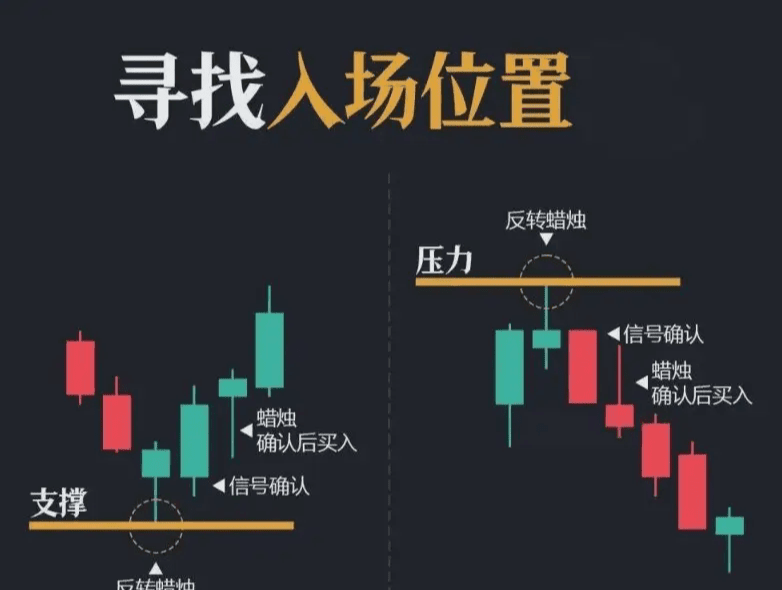
The core principle of the upward continuation pattern.
Only in strong trends do you wait for flags, triangles, and oscillations in these consolidation areas to be broken before entering.
When judging, pay attention to the volume shrinking during the pattern consolidation period, surging at the moment of breakout, and ensuring the overall structure remains intact.
In actual operations, do not rashly enter the market before the pattern has broken through; only wait until the upper range is effectively lifted and there is following action before considering increasing positions in line with the trend.
Patterns are references; breakouts are action signals. If there is no breakout, continue to patiently wait and do not be washed out by oscillations.
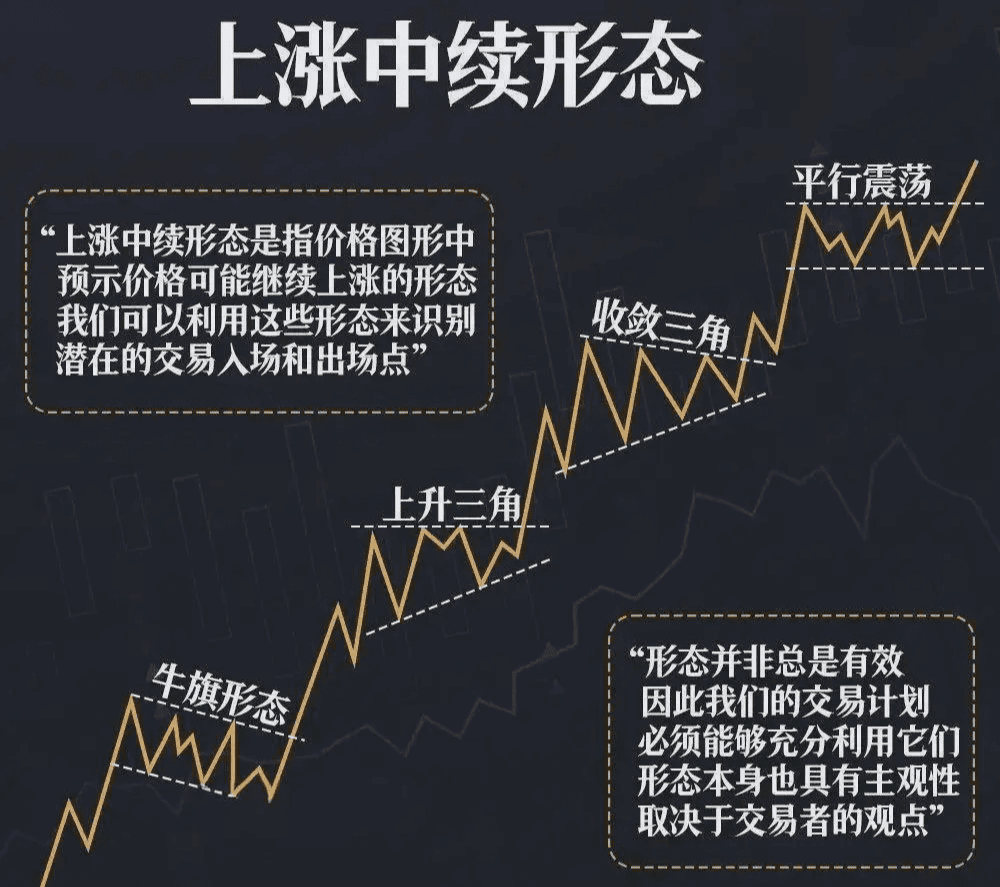
Meeting is fate, knowing is fate. I firmly believe that fate will lead to meeting from afar, while no fate will lead to passing by. The journey of investment is very long, and temporary gains and losses are just the tip of the iceberg. One must understand that even the wisest can make mistakes, while the foolish may sometimes benefit. No matter how emotional you are, time will not stop for you. Pick up your worries and stand up to move forward.
Teaching someone to fish is better than just giving them fish. Investors in this circle, whether they are beginners or experts, gain not just financial returns but also growth in investment knowledge and experience. In the process of following my investment, I will not only provide analysis ideas for the market, basic knowledge for reading charts, and various investment tools' usage methods, but also bring you exciting fundamental analyses, sorting out chaotic international situations, and identifying various investment forces. This will make you both a winner and an expert in investing!
In the cryptocurrency market, grasping the seven major trading methods is crucial for mastering investment strategies to attack and defend. This will allow you to remain steady as a rock in the wind and turn dangers into safety. I have navigated the market for many years and understand the opportunities and traps within. If your investments are not going well and you feel unfulfilled with losses, follow me, and I will correct your past; if you are already profitable, I will teach you how to maintain profits; if you are still lost in the market, I am willing to guide you forward. The real tragedy of trading is not how much you suffer, but how many opportunities you miss! Seize the present, and let’s move forward together; someone destined to leave a name in the cryptocurrency circle!
Strong recovery, assets doubling! Keep up with the rain, layout in advance, and easily reap great profits.
Continue to follow: CFX DIA
